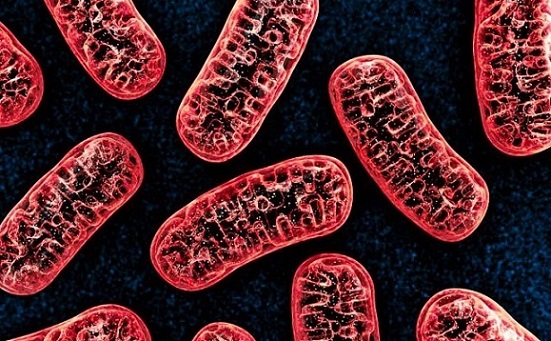Nikhil Prasad Fact checked by:Thailand Medical News Team Oct 15, 2025 1 month, 2 weeks, 1 day, 9 hours, 30 minutes ago
Medical News: Scientists Identify a Possible Link Between Immune Dysfunction and Mitochondrial Damage
A new discovery by researchers from the University of Kentucky, Augusta University, University of Texas Southwestern Medical Center, Medical University of South Carolina, Baylor University, and Oklahoma Medical Research Foundation has shed light on why millions of people around the world continue to suffer from post-COVID fatigue, also known as Long COVID fatigue syndrome. The study reveals that a molecule known as soluble interleukin-2 receptor (sIL2R) may directly impair muscle mitochondria — the tiny power generators inside our cells — leading to the extreme exhaustion many patients experience after recovering from COVID-19. This
Medical News report explores this groundbreaking finding and its potential to open new therapeutic avenues for one of the most persistent post-pandemic health issues.
 Soluble IL2R Could Hold the Key to Treating Post-COVID Fatigue
How sIL2R Affects the Body After COVID-19 Infection
Soluble IL2R Could Hold the Key to Treating Post-COVID Fatigue
How sIL2R Affects the Body After COVID-19 Infection
Post-COVID fatigue has puzzled doctors and scientists since the early days of the pandemic. Patients often report muscle weakness, reduced stamina, and overwhelming tiredness even months after infection. In this study, researchers found that elevated levels of sIL2R — a marker of T-cell immune system activation — could be responsible for this energy loss.
To test their theory, the team compared 11 post-COVID fatigue patients with 17 healthy individuals. Even though both groups had similar muscle mass and strength, the post-COVID group performed significantly worse in physical endurance tests, covering 16% less distance in a standard six-minute walk. Muscle biopsies from the patients showed visible mitochondrial damage and reduced oxygen consumption — evidence of a loss in the cells’ ability to generate energy efficiently.
The Molecular Clues Behind the Fatigue
Using advanced techniques like high-resolution respirometry and electron microscopy, scientists observed that patients’ mitochondria had ruptured membranes and increased signs of cellular stress. Biochemical tests confirmed that vital enzymes such as citrate synthase and cytochrome c oxidase were less active. These enzymes are essential for energy production within muscle cells, indicating that the fatigue was not just psychological but rooted in real cellular damage.
Further analysis of blood samples revealed that sIL2R levels were up to five times higher in patients than in healthy individuals. When the researchers introduced sIL2R into healthy muscle cell cultures, they observed the same reduction in energy production, confirming that this molecule alone was capable of inducing mitochondrial dysfunction.
Potential for Targeted Treatments
The study suggests that targeting sIL2R could help restore mitochondrial function without suppressing the entire immune system. Possible approaches include neutralizing antibodies, receptor blockers, or intravenous immunoglobulin therapy, wh
ich may lower sIL2R levels and alleviate fatigue. Researchers believe this discovery could also provide insight into other post-viral fatigue syndromes, including those caused by infections predating COVID-19, where similar symptoms and mitochondrial issues have been observed.
A Step Toward Understanding Long COVID Mechanisms
The authors acknowledge the small sample size as a limitation but emphasize that the results were consistent and statistically significant. The study provides a crucial step forward in identifying how long-term immune activation after viral infection can disrupt muscle energy systems. By pinpointing sIL2R as a key culprit, the research opens new paths for diagnosing, monitoring, and eventually treating post-COVID fatigue.
The study findings were published in the peer reviewed journal: Clinical and Translational Medicine
https://onlinelibrary.wiley.com/doi/10.1002/ctm2.70507
These findings are a major step toward developing specific and effective treatments for those suffering from chronic post-COVID fatigue. If therapies targeting sIL2R prove successful, millions of long COVID patients may finally find relief from one of the most debilitating consequences of the pandemic. This work also reinforces the importance of continued research into post-viral immune and metabolic dysfunctions that could inform future responses to similar global health challenges.
For the latest COVID-19 News, keep on logging to Thailand
Medical News.
Read Also:
https://www.thailandmedical.news/articles/coronavirus
https://www.thailandmedical.news/articles/long-covid
